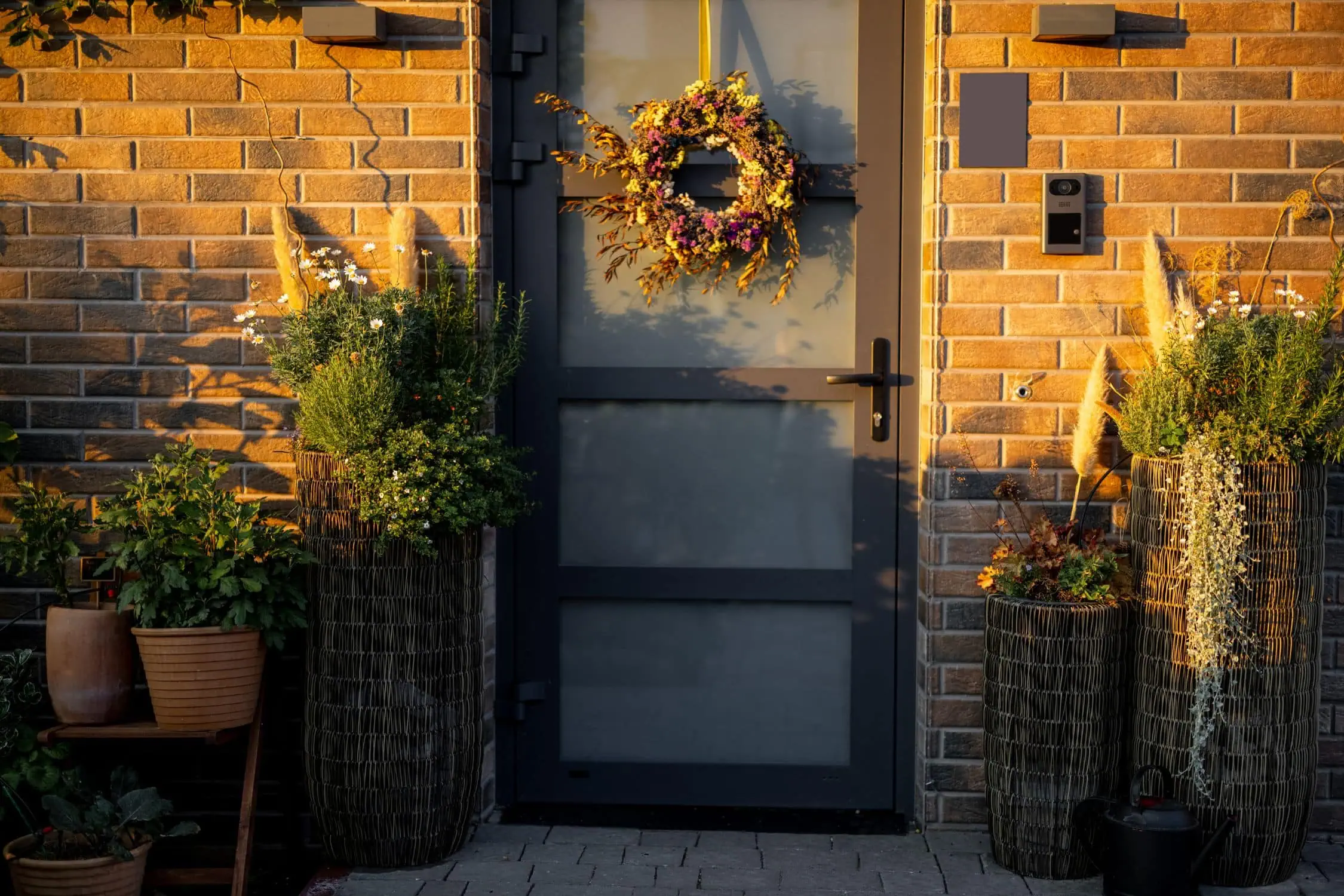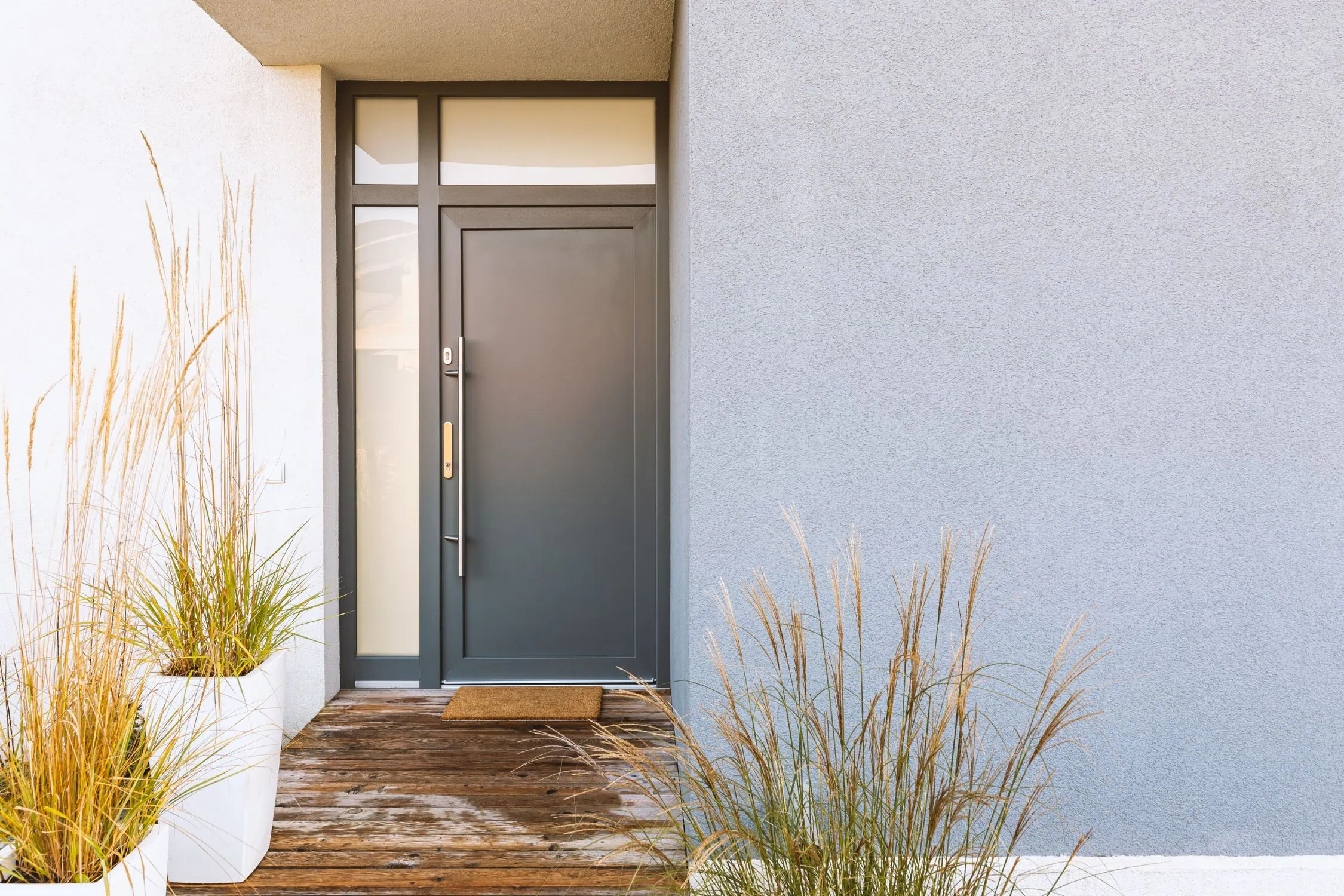Choosing the right exterior door size can be trickier than it seems — especially in Canada, where climate, building codes, and regional construction norms all come into play. Whether you're building a new home, renovating an older one, or just replacing a tired old front door, getting the measurements right can save you time, money, and frustration.
This isn’t just about fitting a slab into a hole. It’s about choosing a door that works for your space, your lifestyle, and your climate — especially if you're battling snowdrifts and sub-zero temps half the year.
Let’s break it all down — from common dimensions and materials to custom situations and mistakes to avoid.
What Is the Standard Size Door?
Standard Size Door Width
The most common standard exterior door width in Canada is 36 inches, especially for front entry doors. Other common widths include 30", 32", and 34", depending on door type, age of the home, and design intent.
These widths refer to the “nominal” slab size — but the actual slab width is always ¼" less.
Example: a “30-inch” slab is actually 29.75"; a 32" is 31.75", 34" is 33.75", etc. This ¼-inch gap ensures the slab fits into the frame with proper clearance.
Standard Size Door Height
Standard door height is typically 80 inches (6'8"), although 96-inch (8-foot) doors are increasingly popular in modern or custom builds.
Slab height is usually either 79" or 95", depending on whether you’re installing a 6'8" or 8' door.
The frame height for a 6'8" door is approximately 82 3/8". These are often referred to as “6’8” doors or 7-foot doors” in the trade.
When measured with the frame included, door heights are usually 82 3/8" for a 6'8" door and 98 3/8" for an 8-foot door.
Standard Door Frame Size
The door frame includes the slab, jamb, and space for hardware and movement. For a standard 36" x 80" slab, the frame typically measures around 38" x 82".
For framing reference:
- A 2x4 wall uses a jamb size (OT) of 4 5/8", but with brickmould, our OT becomes 5 ¾".
- A 2x6 wall uses a jamb size (OT) of 6 5/8", which becomes 7 ¾" with brickmould.
- The threshold in this case would be 6 ¼" for 2x4 walls and 8 ¼" for 2x6 walls.
Frame sizes can range from 62 inches up to 74 inches in width, depending on the configuration — such as single doors with sidelights or double door setups.

Standard Door Brick Size
The brick opening — the actual structural hole in your wall — is generally 2 inches wider and taller than the frame. This extra space allows room for installation, shims, and insulation.
The rough stud opening (RSO) is typically 1 to 1½ inches larger than the frame size — this gap allows for polyurethane foam insulation and installation adjustment.
In homes over 20 years old, the RSO is often framed 1–1½" larger than the brick-to-brick size. However, homes built in the last 20 years may have no difference between the stud and brick sizes.
Example: If you have a brick opening of 68" x 84", your door frame size would be 66" x 82", which fits two 32" wide slabs for a double door setup.
Standard Door Slab Size
The slab is just the door itself — no frame or hardware. A standard exterior door slab is 36" x 80", though 32" and 34" slabs are also common in older or secondary entrances.
Slabs are also labeled 30, 32, 34, 36, 40, or 42 — but again, the actual measurement is always ¼" less than the nominal size.
Note: Odd slab sizes (like 34" or 42") are not always stocked and may have different embossed patterns or even slight color variation in factory white finishes.
Standard Door Size by Type
Each door type comes with its own sizing conventions. Here’s a practical rundown:
Standard Single Door Size
Single exterior doors are the most common option in Canadian homes. The standard single door size is 36" x 80", providing enough clearance for accessibility and general use. Less common sizes include 32" and 34" widths, often found in older homes or side entrances. Taller variants at 96" are used in custom or modern builds.
Standard Double Door Size
Double doors typically consist of two 30", 32", or 36" slabs, resulting in total widths of 60", 64", or 72". Height remains consistent at 80", though taller options are available.
Standard Patio Door Size
Sliding patio doors often come in widths of 60", 72", 96", or 144", depending on the number of panels. The most common height is 80", matching entry door heights.
Standard Sliding Door Size
For standard two-panel sliding doors, 5' and 6' widths are most common. Larger three- and four-panel configurations range from 8' to 12' wide. Heights generally remain at 80", but tall sliding doors can reach up to 96".
Standard Door Sizes by Material
Door material plays a surprisingly big role in sizing flexibility.
|
Material |
Common Sizes |
Notes |
|
Steel |
30", 32", 34", 36" × 80" |
Very precise sizing; great for security and energy efficiency |
|
Fiberglass |
Same as steel + custom options |
Flexible sizing; looks like wood, low maintenance |
|
Wood |
30"–42"+ widths, 80"–96"+ heights |
Most customizable; ideal for heritage homes, but more expensive |
|
Composite |
Follows industry standards |
Engineered materials with optional performance upgrades |
Pro insight: Not all door slabs fit all frames — especially when mixing materials (e.g., a wood door in a steel frame). Always confirm compatibility before ordering.
What Affects the Right Door Size?
It’s not just about what fits. It’s about what works — for your space, your climate, and your code requirements.
Building Codes & Accessibility
Canadian code requires a clear opening of at least 32", so you’ll typically need a 36" wide door to meet this. Wider openings might be needed for future accessibility.
Architectural Style
Contemporary homes often lean toward oversized doors or minimalist flush-panel designs. Traditional homes stick to 36" single or 64" double doors with more ornate details.
Climate
Canadian winters can be brutal. Bigger doors = more surface area for heat loss. Proper weather stripping, thresholds, and insulation are essential — especially on larger doors.
Daily Use
Got kids? A stroller? Pets? A wide door helps. Planning to age in place? Consider future mobility needs now — not 10 years from now.

How to Measure a Door Opening Correctly
Don’t eyeball this. Even ½ an inch off can ruin your install day.
1. Measure the Rough Opening
Measure width (top, middle, bottom) and height (left, center, right) — use the smallest number.
2. Account for Frame and Jambs
The door slab isn’t the whole story. Your frame, jamb, and trim add 2–2.5" to each side.
3. Check for Square
Use a level and square to make sure your opening isn’t bowed or out of plumb.
4. Get a Pro for Complex Installs
If you’re dealing with double doors, arched tops, or anything non-standard — pay for a proper measurement. It costs little but saves a lot.
When Should You Consider a Custom Door?
Sometimes “standard” just won’t cut it.
- Unique Architecture: Arched openings, extra height, narrow walls
- Heritage Homes: You want to preserve original style and proportions
- Unusual Sizes: You don’t want to tear down half your front wall
- Performance Upgrades: High-security, soundproofing, or extreme weather resistance
Custom doors cost more — but modifying brickwork or drywall can cost even more.
Common Door Sizing Mistakes (and How to Avoid Them)
Let’s prevent headaches now instead of fixing them later.
- Measuring once – Always measure three times in different spots.
- Forgetting the frame – A 36" door doesn’t fit a 36" opening.
- Ignoring swing direction – Left-hand? Right-hand? In or out? It matters.
- Overlooking clearance for hardware – That fancy handle set needs space to turn.
Pro insight: Most sizing mistakes come from ordering based on door slab size instead of frame size. Also note that odd-sized slabs can differ slightly in design or color.

Expert Tips for Choosing the Right Door Size
- Don’t size down to save money — It’ll cost you in accessibility and resale.
- Leave room for future accessibility needs
- Always measure twice — before AND after framing changes
- Stick with standard where possible — It’s cheaper and faster to install
- If in doubt, go wider — not taller (Wider doors tend to be more practical and easier to source.)
Standard Door Size: Finding the Perfect Fit
Most Canadian homes are well-served by standard door sizes — especially 36" x 80". But don’t treat sizing as an afterthought. The wrong size door can throw off your entire entryway, mess with airflow, and create endless draft or clearance problems.
Pay close attention to slab vs frame vs RSO vs brick — they’re all slightly different, and getting them wrong can delay installation or cause fitment issues.
When in doubt, ask a pro. I help homeowners and builders across Canada find and fit the right door for their space — standard or custom. If you want a second opinion or help with measurements, feel free to get in touch.













